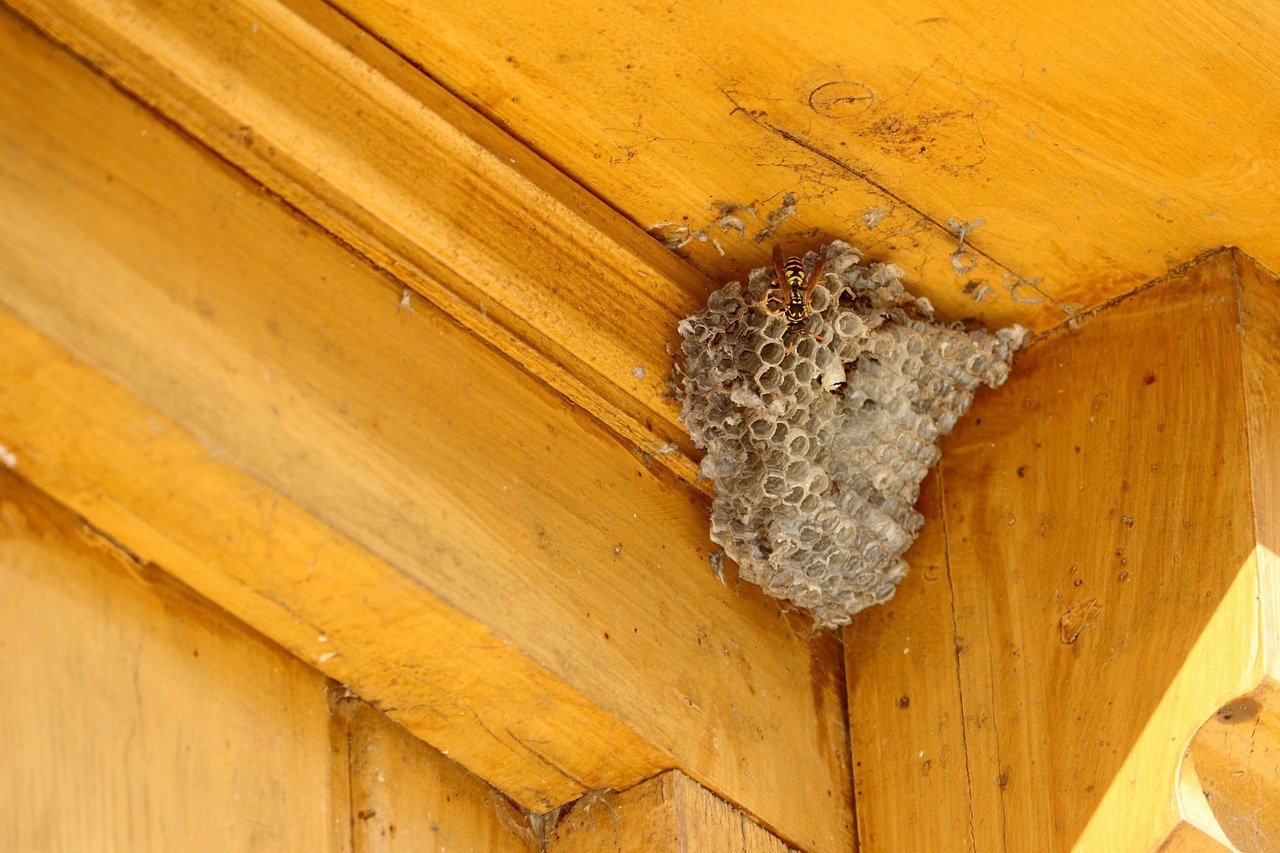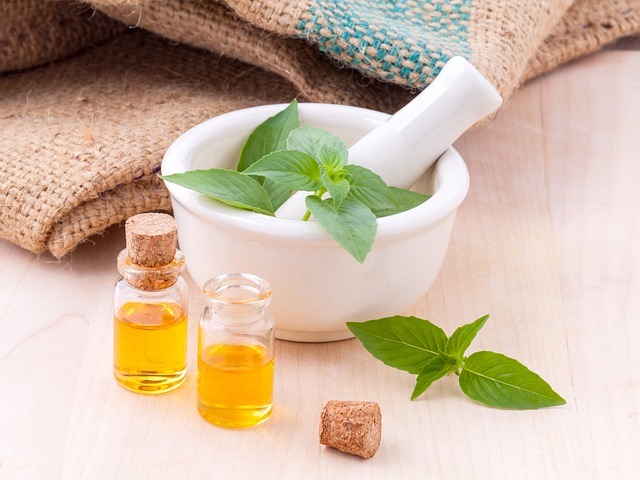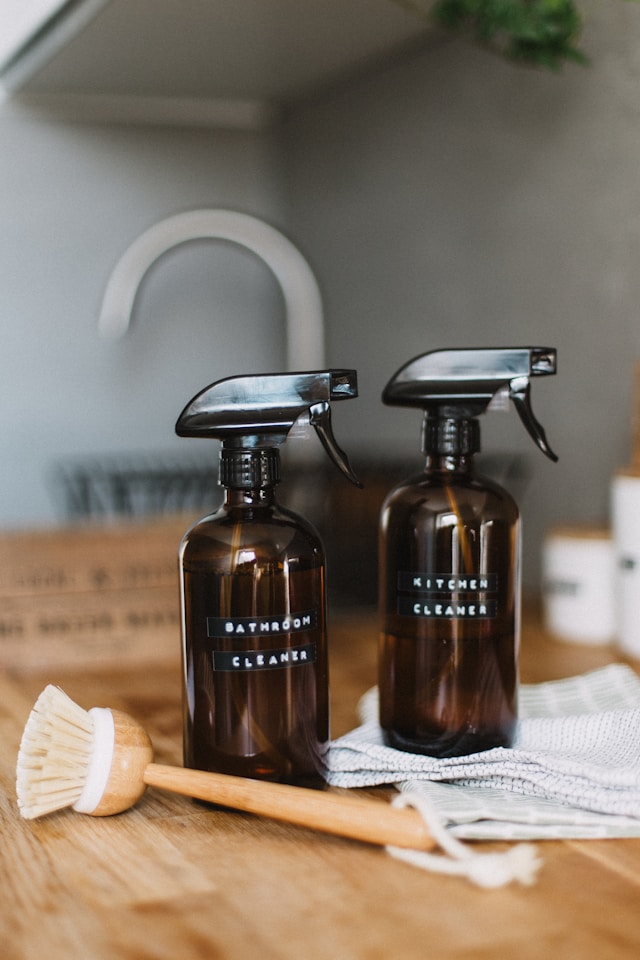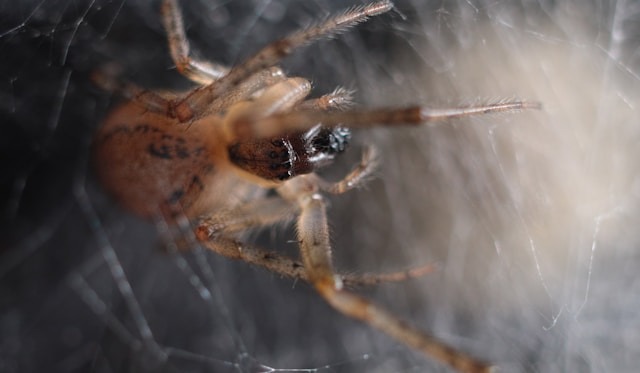Insect control is a crucial aspect of maintaining a comfortable and healthy home environment. As awareness of the potential hazards associated with chemical pesticides grows, many homeowners are turning their attention to natural solutions that promise to keep pests at bay without compromising the well-being of their families and pets. This guide is tailored for the eco-conscious do-it-yourselfer who is eager to explore and implement natural insect control methods within their living spaces. Whether you’re dealing with a seasonal ant invasion, a persistent fruit fly problem, or just looking to prevent future pest issues, this article will provide you with a variety of natural strategies that are both effective and environmentally friendly. From understanding the basics of natural insect control to crafting your own repellents and traps, we’ll walk you through each step, ensuring that you’re well-equipped to protect your home in a safe and sustainable manner.
Understanding Natural Insect Control
Embracing natural insect control involves employing strategies that harness nature’s own mechanisms to keep unwanted insects at bay. This approach eschews synthetic chemicals in favor of leveraging substances and tactics found in the natural world, such as employing predatory insects, using botanical deterrents, and modifying habitats to be less inviting to pests.
At the heart of this approach is the pursuit of equilibrium: managing pests in a way that also preserves the surrounding environment and safeguards the health of humans and their furry companions. A deep dive into the behaviors, life cycles, and ecological interactions of insects allows for the development of strategies that disrupt pests’ activities without resorting to harsh chemicals.
For example, the strategic placement of certain plants can act as a natural barrier, deterring specific pests from entering your space. By focusing on the underlying causes of infestations, homeowners can keep their living areas free of pests in a more sustainable way.
Natural insect control is a cornerstone of integrated pest management (IPM), a comprehensive strategy that combines various control methods to minimize health, environmental, and financial risks. This eco-conscious choice not only addresses immediate pest concerns but also contributes to the long-term health of the ecosystem, preventing issues such as insect resistance and collateral damage to non-target species, including vital pollinators.
Grasping the essence of natural insect control equips homeowners with the tools to make informed, eco-friendly choices for safeguarding their homes against pests.
Benefits of Natural Solutions
Choosing natural methods for insect control comes with a plethora of benefits that resonate with the increasing desire for sustainable and health-conscious lifestyles. These methods are inherently safer for both people and pets, significantly reducing the potential for harmful exposure to toxic substances that can range from causing minor irritations to triggering severe, long-term health conditions.
Environmentally, natural solutions have a softer footprint; they break down more quickly and are less likely to pollute or disrupt local ecosystems. Steering clear of synthetic chemicals helps protect essential pollinators like bees and butterflies, which are pivotal for pollination and preserving biodiversity.
Moreover, these natural methods can be surprisingly economical. Many effective solutions can be concocted from everyday household items or cultivated from easy-to-grow plants, sparing homeowners the expense of purchasing commercial pesticides. This not only saves money but also lessens the environmental impact associated with the production and distribution of conventional pest control products.
Another significant advantage is the reduced likelihood of pests developing resistance. Unlike synthetic chemicals that can lose their effectiveness over time as pests adapt, natural methods employ a variety of tactics that make it harder for pests to become resistant.
Finally, adopting natural pest control practices fosters a sense of empowerment and self-reliance. By understanding and addressing the ecological aspects of household pests, individuals can apply more precise and thoughtful measures. This not only enhances the health and harmony of their living spaces but also deepens their connection to the natural world.
These advantages highlight the value of considering the broader implications of pest control decisions on our health, the environment, and our wallets. Natural solutions offer a balanced and sustainable approach to achieving a pest-free home, reinforcing their role in a comprehensive pest management strategy.
Preventative Home Care
Embracing a proactive stance is key to effective pest management within the home. This approach entails a combination of meticulous cleanliness and the establishment of physical deterrents to dissuade insect encroachment.
The heart of the home, the kitchen, along with dining spaces, should be kept immaculate, as remnants of food can be an open invitation to a variety of pests. A regimen of sweeping, vacuuming, and conscientious food storage, coupled with swift disposal of waste, forms the bedrock of a clean household. Immediate attention to spills and the proper management of overripe produce are small but significant actions that can stave off unwanted insect guests.
Equally critical to pest prevention is the fortification of the home against intrusion. This defense includes the inspection and remediation of any breaches in the home’s exterior, such as fissures in the walls or foundation and gaps around windows and doors. Ensuring that screens are intact and repairing any damage promptly is a must. Adding door sweeps and weather stripping adds another layer of protection, while sealing openings around utilities with suitable materials can block common pest entryways.
The area surrounding your home also demands attention. A well-maintained yard, free from excess foliage, stagnant water, and debris, reduces the appeal of your property to insects. Strategic landscaping, such as pruning vegetation to prevent contact with your home, can deter pests from drawing near.
Moisture control is another pivotal element in the prevention strategy. Many insects are attracted to moist environments; therefore, rectifying leaks, promoting adequate airflow, and keeping basements and crawl spaces dry are essential. In some climates, the use of dehumidifiers may be necessary to maintain a less hospitable environment for pests.
Incorporating non-toxic deterrents, like diatomaceous earth, can also be effective. Sprinkling this natural, safe substance in areas prone to insect traffic can be a lethal obstacle for many crawling pests.
By weaving these preventative measures into the fabric of home care, you create a robust barrier against pest invasions, minimizing the need for more aggressive control tactics and ensuring a healthier living space.
Maintaining Cleanliness and Sealing Entry Points
Building upon the foundation of preventative home care, maintaining a spotless environment is a linchpin in deterring insect invasions. A thorough cleaning regimen targets the elimination of food remnants and moisture, which are prime lures for pests. Regularly wiping surfaces, addressing hard-to-reach nooks, and keeping storage areas orderly are essential practices. Ensuring that food is securely stored, waste is disposed of without delay, and containers are rinsed before recycling are all part of a robust defense against pests.
The reinforcement of your home’s barriers is a continuation of this defense strategy. Beyond the visible cracks and crevices, it’s imperative to address less conspicuous points of entry, such as the junctures where utilities enter the home. Employing silicone-based caulk for smaller openings and expanding foam for larger voids can seal these vulnerabilities. Door thresholds should be scrutinized for gaps that might permit insects to pass, with door sweeps offering an additional layer of security.
Ongoing inspections are vital to ensure these defenses hold firm against the changing seasons, which can cause materials to shift and new entry points to emerge. A routine check and maintenance of these seals will keep them effective throughout the year.
Organization also plays a role in cleanliness by minimizing clutter, which can serve as a refuge for pests. By regularly decluttering, you not only facilitate cleaning but also diminish the potential hiding spots for insects to nest and multiply.
By consistently upholding these cleanliness and sealing practices, you fortify your proactive pest control measures, ensuring your home remains a sanctuary free from unwanted insect inhabitants.
Natural Insect Repellents
Embracing eco-conscious living extends to how we manage pests in our homes. Natural insect repellents are a cornerstone of this approach, offering a harmonious way to keep unwanted guests at bay. These solutions harness the power of nature’s own defense mechanisms, utilizing substances that are benign to humans and pets but repulsive to insects.
A prime example of such repellents is the diverse array of essential oils. Oils derived from citronella, eucalyptus, peppermint, lavender, and tea tree are celebrated for their ability to ward off pests. These aromatic oils can be diffused to permeate a space with their scent, blended with water for surface applications, or dabbed on cotton balls and tucked into nooks where insects are prone to linger.
Beyond oils, the charm of herbal plants lies not only in their pest-repelling prowess but also in their aesthetic appeal. Basil, for instance, not only adds a fresh note to your kitchen but also keeps flies and mosquitoes at a distance. Similarly, catnip, with its potent compound nepetalactone, can outperform DEET in repelling mosquitoes. Other herbs like rosemary and mint can thrive indoors or in garden beds, forming a fragrant barrier against insect intruders.
While these natural agents are generally safe, it’s wise to consider individual sensitivities. Always exercise caution, particularly around those with known allergies or sensitivities.
Household staples can also play a role in this green defense strategy. For example, cucumber slices act as a natural ant deterrent, and coffee grounds, when scattered around a property’s edge, can discourage various pests. These items are especially appealing as they are non-toxic and commonly found in most households.
Consistent and ample application is key to the success of these natural repellents. Although they may require more frequent use than their synthetic counterparts, their safety profile and minimal environmental footprint make them an attractive option for safeguarding your home’s health and air quality.
Essential Oils and Herbal Plants
Delving deeper into the aromatic world, essential oils and herbal plants offer a sensory delight while serving as a formidable line of defense against pests. A few essential oils have gained prominence for their repellent qualities:
- Lemongrass Oil: Its citronella content is a well-known mosquito adversary.
- Eucalyptus Oil: A natural shield against mosquitoes and other biting insects.
- Peppermint Oil: A versatile oil that can deter ants, spiders, and even rodents.
- Lavender Oil: Known to keep moths, fleas, flies, and mosquitoes at bay.
- Cedarwood Oil: A robust oil that repels a spectrum of insects, including moths and ants.
These oils offer flexibility in their use; they can be diluted and applied topically, sprayed onto surfaces after being mixed with water, or diffused to create an insect-repellent ambiance.
When it comes to herbal plants, their efficacy against insects can be quite potent, and they seamlessly integrate into any indoor or outdoor green space:
- Basil: Its aroma is off-putting to mosquitoes and flies.
- Mint: Known to repel various insects, it’s especially effective against ants and aphids.
- Rosemary: Its robust scent is uninviting to mosquitoes and harmful garden insects.
- Chrysanthemums: They contain pyrethrins, a natural insecticide, making them formidable against a wide range of pests.
The secret to their effectiveness often lies in the essential oils contained within the plants themselves. Positioning these herbs in strategic locations, such as near entry points or gathering areas, can help to naturally deter insect incursions.
It’s important to acknowledge that despite their natural origins, some essential oils and herbs can be quite potent. Responsible use is paramount, particularly in households with sensitive individuals or pets.
Incorporating essential oils and herbal plants into your pest management routine contributes to a comprehensive approach to insect control. This strategy not only offers a pleasant olfactory experience but also aligns with the principles of a natural, health-conscious household.
DIY Insect Control Recipes and Application
Crafting your own insect deterrents can be a rewarding and environmentally conscious endeavor. Below, you’ll find a selection of homemade concoctions designed to repel unwanted visitors:
- All-Purpose Insect Repellent Spray:
- Stir together 1 cup of water with 1 cup of witch hazel, then add 30-40 drops of your chosen essential oil—eucalyptus, lavender, and peppermint are excellent choices.
- Transfer the blend to a spray bottle, giving it a good shake prior to each use. Apply liberally around potential insect entry points such as doorways and windowsills.
- Ant-Deterrent Spray:
- In a spray bottle, combine 1/4 cup of vinegar with 2 cups of water and a quick dash of 10 drops of peppermint oil.
- After shaking thoroughly, spritz the mixture along areas where ants frequent, including baseboards, countertops, and their established trails.
- Mosquito-Repellent Lotion Bars:
- Gently melt 1 cup each of coconut oil, shea butter, and beeswax together using a double boiler.
- Once removed from the heat, introduce 30 drops of mosquito-repelling essential oils such as citronella or lemon eucalyptus.
- Pour the mixture into molds, allowing it to solidify. Once set, apply to the skin as a natural protective barrier against mosquitoes.
- Fruit Fly Trap:
- Pour apple cider vinegar into a small bowl and stretch plastic wrap over the top, securing it with a rubber band.
- Pierce the wrap with small holes to let fruit flies enter without escaping.
- Refresh the vinegar regularly to maintain the trap’s effectiveness.
- Dusting Powder for Flea Control:
- Mix together 1/2 cup of diatomaceous earth with 1/4 cup of neem powder, then add 15-20 drops of eucalyptus or lavender oil for fragrance.
- Sprinkle a light coating on pet bedding and carpets, wait a bit, then vacuum thoroughly.
Remember, the way you apply these recipes can vary. Always label your homemade mixtures with their contents and the date of creation, and keep them away from children and pets. Before using sprays or lotions on the skin, do a patch test to prevent allergic reactions. Reapply sprays as necessary, especially after cleaning or rainfall if used outdoors.
These DIY solutions complement the preventative measures discussed earlier, offering a suite of options for different pest problems while prioritizing safety and environmental health.
Vinegar and Soap-Based Solutions
Vinegar and soap are time-honored allies in the fight against pests, prized for their accessibility, cost-effectiveness, and potency.
Apple cider vinegar, with its acidic nature, can create an environment that’s less than inviting for a variety of insects. For a straightforward repellent:
- Combine equal parts water and vinegar, with the option to infuse the mixture with a few drops of essential oil for a pleasant aroma.
- Decant into a spray bottle and apply to insect-prone areas such as countertops, sinks, and window sills.
Vinegar is particularly adept at erasing the scent trails left by ants, disrupting their ability to navigate and communicate.
Soap-based formulas, meanwhile, act as a surfactant, breaking down the protective exoskeletons of soft-bodied pests like aphids, mites, and whiteflies, and leading to their dehydration.
For an effective soap spray:
- Dissolve 1 to 2 teaspoons of liquid, unscented castile soap in a quart of water.
- Directly spray the affected pests or plant foliage. Be mindful to avoid application during peak sun hours or when plants are under drought stress, as the soap can cause damage to the leaves.
Consistent application, especially after precipitation or irrigation, enhances the effectiveness of these solutions. If plants show signs of distress, such as wilting or leaf burn, dilute the mixture further and test on a small section.
While these solutions are gentler than synthetic pesticides, they should still be used judiciously to avoid harming beneficial insects or delicate plants. By keeping a close eye on the affected areas and applying these treatments with precision, you can ensure the best results with minimal collateral damage.
Together, vinegar and soap-based solutions form a fundamental part of your home pest control toolkit, working in harmony with the array of strategies detailed in our guide.
Natural Insect Traps
Harnessing the power of natural insect traps offers a sustainable and chemical-free option for mitigating pest issues in your home. These ingenious solutions exploit the natural behaviors of pests to ensnare them effectively.
Sticky Traps:
Crafting sticky traps can be as simple as coating yellow cardstock—a hue that’s irresistible to many pests—with a non-toxic adhesive. Petroleum jelly or a homemade sticky paste can serve as the trapping agent. Position these traps in areas where flying nuisances like whiteflies congregate, and you’ll notice a decrease in their numbers.
Bait Traps:
For ground-dwelling critters such as ants, a concoction of sweeteners combined with a deterrent like diatomaceous earth can be irresistible. Place this mixture in a container and set it in the path of these pests. The bait not only attracts but also helps to manage the population by affecting the insects directly or their colonies when carried back.
Light Traps:
Nocturnal insects are often drawn to light, making light traps an excellent choice for capturing these night-time flyers. By placing a light above soapy water, you can create a trap that lures insects to their watery demise, effectively reducing the local population of moths and their kin.
Cup and Funnel Traps:
For wasps and fruit flies, a DIY trap made from a plastic bottle with its top inverted into a funnel and filled with an attractant such as vinegar can be highly effective. The design ensures that once the pests enter, they cannot escape.
Regular maintenance of these traps is crucial for their continued effectiveness. Proper placement—where pests are most active—can greatly enhance their performance. While these traps are valuable tools in your pest control arsenal, they should be used in conjunction with other strategies for a holistic approach to managing unwanted guests.
Constructing and Using Sticky and Bait Traps
Diving deeper into the construction and utilization of sticky and bait traps, let’s explore how to maximize their effectiveness with everyday materials.
For sticky traps, begin by cutting panels from bright yellow cardstock, or if unavailable, any sturdy paper will suffice. Smear one side with a sticky substance of your choice—be it a commercial adhesive or a homemade concoction of syrupy substances. Hang these near affected areas or place them strategically on the ground to monitor and control flying pests.
Bait traps, on the other hand, require a container such as a jar or a repurposed plastic bottle. The bait should be appealing to the specific pest you’re targeting—sugar water for ants or fermented fruit juice for fruit flies. If using a bottle, invert the neck to create a funnel and secure it. Place these traps in areas of known pest activity, ensuring they are out of reach of children and pets.
Both types of traps necessitate regular inspection and cleaning. Refreshing the adhesive or bait ensures continued efficacy, and strategic placement is key to capturing the most pests. When disposing of these traps, do so responsibly to minimize environmental impact and avoid unintended harm to non-target species.
Incorporating sticky and bait traps into your pest management plan provides a low-cost, environmentally friendly method to assess and address insect infestations.
Safety and Environmental Considerations
Embracing natural pest control strategies comes with a responsibility to safeguard both personal health and the environment. It’s essential to recognize that, although derived from nature, ingredients like essential oils and vinegar can be potent. Always keep such substances beyond the reach of children and pets to prevent accidental ingestion or misuse.
Natural products are not without their risks; for instance, they can provoke skin irritation or allergic reactions in sensitive individuals. Prior to widespread application, it’s wise to perform a patch test to ascertain your skin’s tolerance to the substance.
It’s also important to consider the welfare of beneficial insects. Many natural repellents and traps may inadvertently affect these allies in our gardens and homes. To minimize harm to these crucial species, apply natural solutions with precision and only in necessary areas.
Disposal of materials such as used traps or sticky paper should be conducted thoughtfully. These items can pose risks to wildlife and the environment if not handled correctly. Consider eco-friendly disposal options, such as recycling or composting, when possible.
Be mindful of the broader ecological impact when using substances like diatomaceous earth and boric acid. Despite their natural origins, they can disrupt soil and water quality. Employ these materials judiciously, adhering strictly to application guidelines.
Recognize that natural methods may not always match the potency or longevity of their chemical counterparts. This may necessitate more frequent applications or the integration of multiple strategies for effective pest management.
Lastly, stay informed about local regulations pertaining to pest control. Even natural methods may be subject to restrictions to protect local ecosystems.
In essence, while DIY pest control solutions offer a safer alternative to chemicals, they must be used with an awareness of their potential impact on health and the environment.
Safe Use and Storage
The deployment of DIY pest control measures requires meticulous handling to ensure the well-being of humans and animals in the vicinity. Adhering to best practices in use and storage is crucial for creating a safe space and achieving desired outcomes in insect management.
Keep these pointers in mind when utilizing natural repellents or traps:
- Labeling: Mark all homemade concoctions with their contents and the date they were made. This step is vital to prevent accidental consumption and to track the shelf-life of the mixture.
- Secure Storage: Confine all substances and mixtures to areas inaccessible to children and pets. Lockable cabinets or elevated shelves are ideal to deter inadvertent exploration.
- Dosage and Dilution: Accuracy is key when mixing your solutions. Too strong a mixture can be harmful, while too weak may be ineffective.
- Personal Protection: Don protective gear such as gloves and goggles when handling substances that can irritate the skin or eyes, like acidic mixtures or essential oils.
- Ventilation: When spraying indoors, open windows or use fans to disperse any airborne particles and prevent inhalation.
For storage, consider the following to maintain the integrity of your natural pest control ingredients:
- Environmental Conditions: Store items in environments that are cool and dry, shielded from direct sunlight to maintain their effectiveness. Active ingredients can deteriorate under extreme temperatures.
- Original Containers: If possible, retain the original packaging which includes safety information. Should you need to transfer contents, ensure the new container is clean and clearly labeled.
- Accessibility: Arrange your storage space so that items are easily reachable, reducing the risk of accidental spills or handling mishaps.
- Spill Management: Should a spill occur, address it promptly with suitable clean-up materials and dispose of any waste responsibly.
While natural solutions are generally less hazardous, they demand respectful and cautious handling. By following these guidelines, you not only protect your household but also enhance the success of your pest control endeavors.
1. What natural solutions can you utilize for DIY insect control at home?
Several natural solutions exist for DIY insect control which include vinegar, citrus peels, peppermint oil, eucalyptus oil, and diatomaceous earth.
2. How effective is vinegar for insect control?
Vinegar, especially apple cider vinegar, proves highly effective in controlling insects because it naturally repels insects, deterring them from infesting homes.
3. Can essential oils be used in DIY insect control?
Yes, essential oils such as peppermint and eucalyptus can effectively deter insects due to their strong scents which insects find displeasing.
4. Is diatomaceous earth safe to use for insect control?
Diatomaceous earth, a type of powder made from fossilized tiny aquatic organisms, is safe for humans and pets, but fatal for insects when they come into contact with it.
5. How does citrus peel help in maintaining a bug-free house?
The natural acidity and strong smell of citrus peels, particularly from oranges and lemons, are unpalatable to insects, making these peels an effective natural deterrent.
6. How often should one use these natural solutions for effective insect control?
Ideally, natural solutions for insect control should be used once per week. However, in cases of severe infestation, the frequency can be increased to every three to four days.









